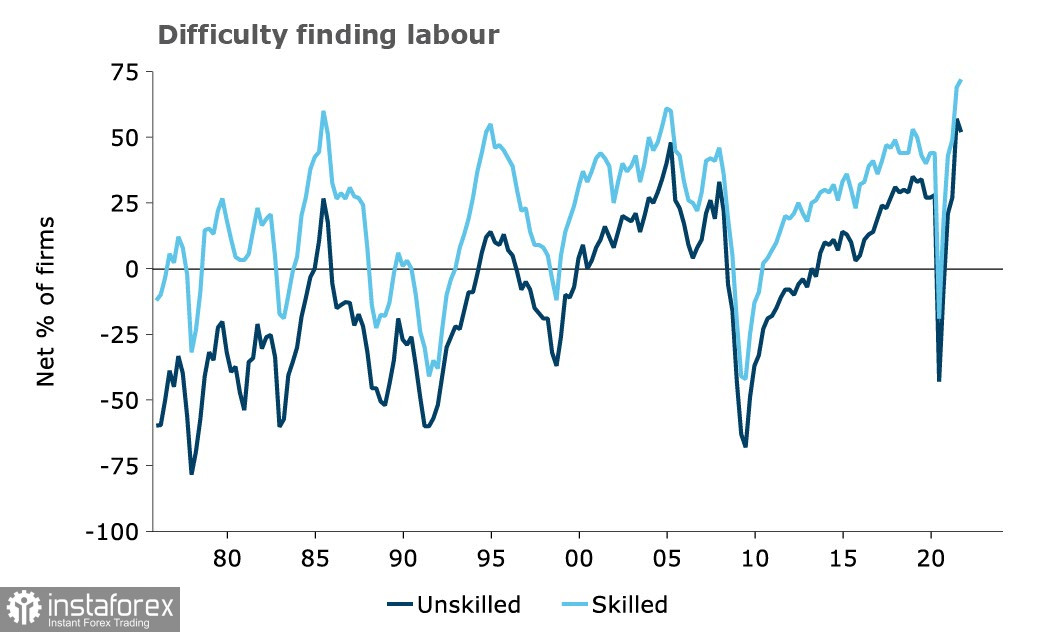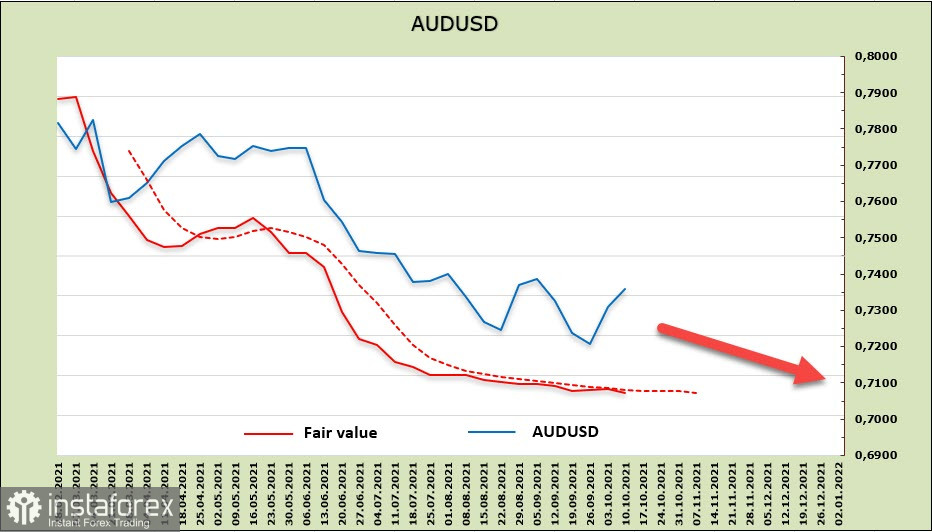The holiday in the United States limited the flow of information to the markets that could make changes in the balance of demand in the currency markets. But the dynamics of oil prices came to the fore – Brent's December futures went above $ 84 per barrel, while WTI is at its maximum since 2014. The growth in oil prices raises concerns that a temporary increase in inflation may not be temporary and force the central banks to react even if they really don't want it.
Such an increase supported the commodity currencies. The euro and the yen look weaker than others, and the US dollar maintained its dominant position.
NZDUSD
For the first time last week, the RBNZ raised the rate from a record low of 0.25% to 0.5%. This increase was expected by the market and was taken into account in advance in quotes, since the RBNZ made it clear in August that it intended to reduce stimulus, and only unplanned COVID-19 restrictions forced it to postpone the start of the cycle a little.
Now, the main question is what's ahead? As of Q3, capacity utilization reached an all-time high, difficulties in finding labor were also close to record levels, and labor shortages are at their highest after the long-forgotten 1973 oil crisis.

There are concerns that with the growth of core inflation and the tense situation in the labor market, the refusal to raise interest rates would only increase the probability of an out-of-control spiral of wages and prices, and further interest rate increases would be required.
The RBNZ does not consider the current rate hike as a serious drag on the economy, rather they want to return monetary policy to the moment when it will have a neutral impact on the pressure on production capacity. According to various estimates, the Central Bank intends to raise the rate to 1.5% by the end of 2022, or to 2% in 2023. In any case, it turns out to be the leader in terms of normalization rates.
Accordingly, the yields of New Zealand T-bills in the long term will grow faster than the yields of most other central banks. In April-May, the yields of 10-year bonds of New Zealand and the United States were approximately equal (about 1.6-1.7%). To date, the yield of the US Treasury has remained at the same level, while for New Zealand, it has increased to 2.117%, that is, the spread dynamics are clearly in favor of the NZD.
The New Zealand dollar still prevailed in the futures market, but the net long position slightly fell. The target price turned down, suggesting a deeper correction.

Here's the bottom line. The indicated currency looks very promising, and speculative interest is likely to resume growth after the correction. The current decline may be prolonged up to 0.6450/60 (50% pullback from 2020 growth), the short-term trend is bearish, testing the level of 0.68, and an attempt to go lower looks likely. In the long term, the New Zealand dollar will try to take advantage of the RBNZ's forward policy, so growth will most likely resume in the coming month.
AUD/USD
Contrary to New Zealand, the opposite trend is observed in Australia for a number of key indicators. The business confidence rebounded sharply in September after a number of anti-business restrictions were lifted, while current business conditions deteriorated sharply in all states without exception. Capacity utilization fell by 80.1% in August to 78.4% in September, which is a sign of a noticeable decline in the economy.
The good news is that restrictions are still being lifted due to both the high level of vaccination and seasonality (summer is approaching in the southern hemisphere). Nevertheless, it is clearly early to count on the Australian dollar's resumption of growth. The net short position on AUD is the highest among the G10 countries (only Japan has more), the estimated price is lower than the spot price, and attempts to make an upward reversal have not yet led to a result.

It is assumed that the downward movement will continue. At the moment, AUD/USD pair is trading around the middle of the descending channel, and a possible upward correction is limited by the upper limit of the 0.7550/60 channel. A movement to the support level of 0.70 looks more likely.





















